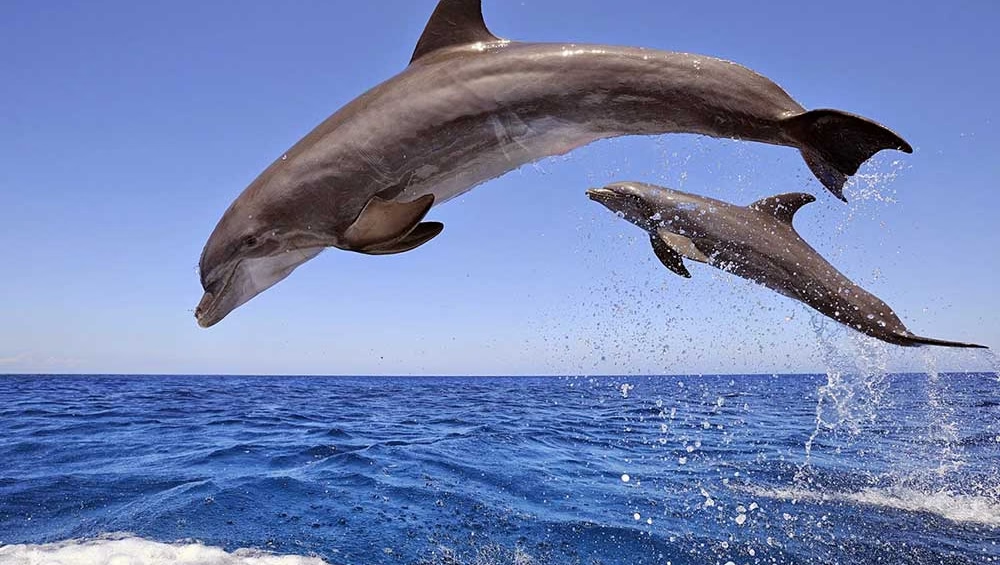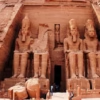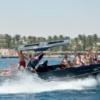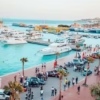Dolphin House off the coast of Hurghada is one of the most magical places in the Red Sea. Here, visitors can swim with wild dolphins, snorkel, or simply observe these intelligent marine mammals in their natural environment. This article delves into the world of Dolphin House, exploring its ecological significance, the best activities, and tips for an unforgettable experience.

Location and significance of Dolphin House
Geographical position: Approximately 12 km north of Hurghada, near the Giftun Islands.
Natural habitat: Shallow lagoons and coral reefs, ideal for dolphins.

Inhabitants: Mainly bottlenose dolphins (Tursiops truncatus), known for their curiosity and friendliness towards humans.
The dolphins of Hurghada: behavior and protection
a) Social structure of dolphins
Live in groups (“pods”) of 5–15 animals.
Communicate through clicks and body language.
b) Ecological significance
Dolphins are indicators of a healthy marine system.
Threats: overfishing, plastic waste, irresponsible tourism.
c) Protective measures
Egyptian laws: minimum distance from boats (30 m).
Responsible tours: no feeding, no touching the animals.

Activities at Dolphin House
a) Snorkeling with dolphins
Best time: in the morning (9–11 a.m.), when the dolphins are active.
Rules of conduct:
Do not chase them!
Move slowly so as not to scare the animals.
b) Dives
Depth: 5–15 m, perfect for beginners.
What you will see: In addition to dolphins, turtles, reef sharks, and colorful fish.
c) Boat trips & observation
Glass-bottom boats: Ideal for families with children.
Photo tips: Bring an underwater camera!
Choosing the right Dolphin House tour
a) Recognizing reputable providers
Certified diving schools (e.g., PADI or SSI members).
Small groups (max. 10 people per guide).
b) How much does it cost?
Price range: $50–$120 (depending on what is included).
Included: Lunch, snorkeling equipment, guide.
c) What to wear?
Wetsuit (protection against sun and jellyfish).
Life jacket for those who are unsure.
Ethical issues & sustainability
a) Should you swim with dolphins?
Pros: Raising awareness for species conservation.
Cons: Stress for animals due to mass tourism.
b) Alternatives to free dolphins
Dolphinella (Hurghada): Controversial dolphinarium.
Better: Whale watching tours in the Red Sea.
Conclusion
The Dolphin House is a unique place that demands respect and responsibility. Those who follow the rules will be rewarded with a magical experience – and help to ensure that these wonderful animals are preserved for future generations.





